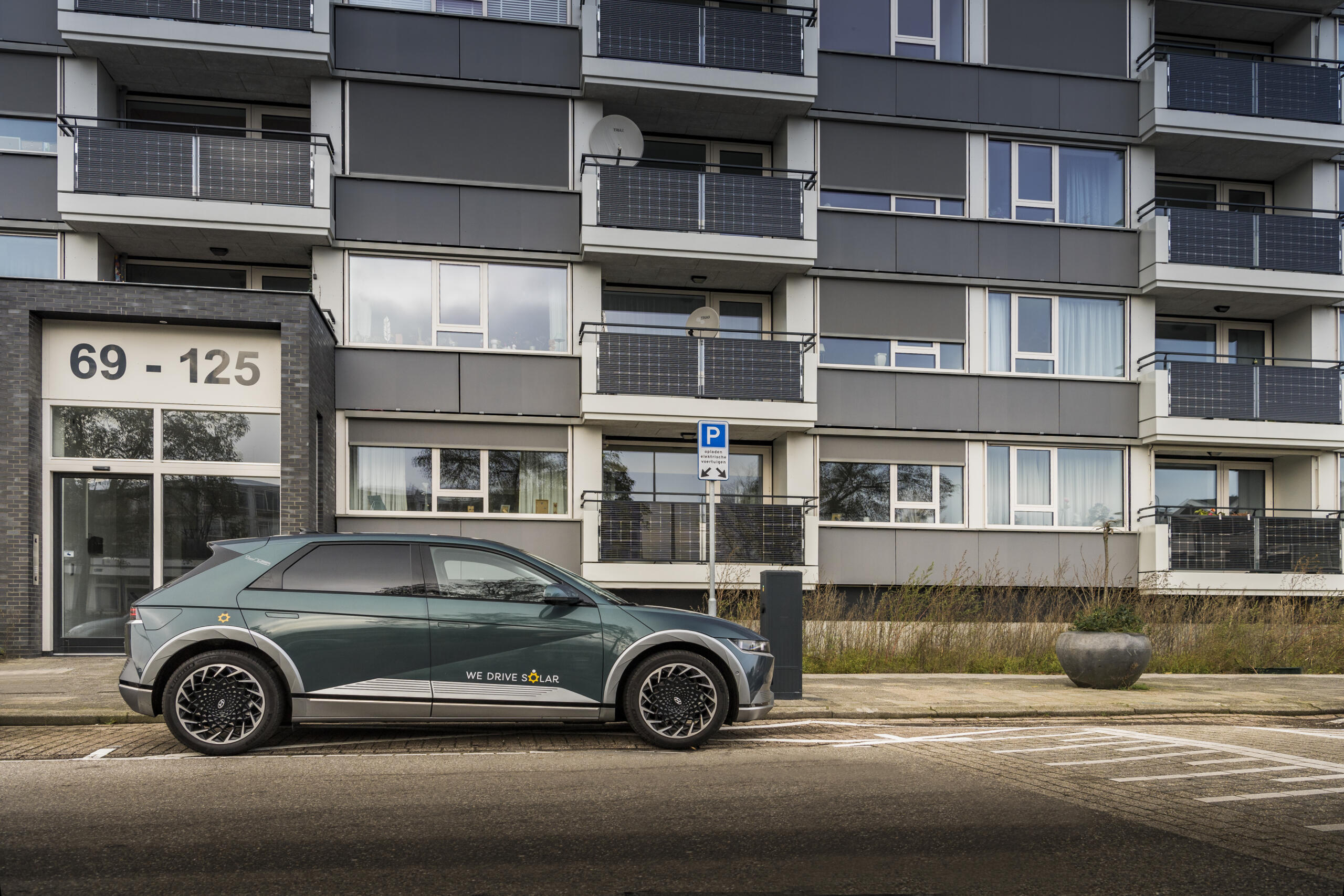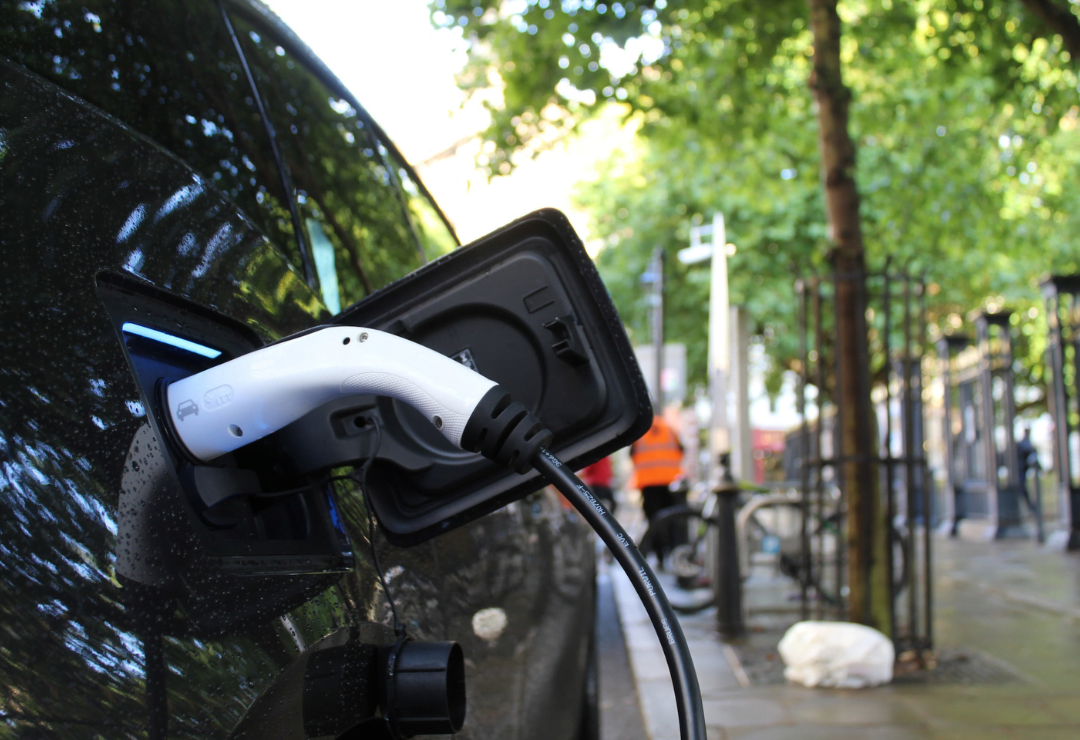A Balancing Act
There is growing pressure on the urban space and energy grid from public on-street charging infrastructure, and while local authorities are facilitating their deployment, these efforts do not come without challenges.

SCALE banner. Credit: SCALE project
Electromobility is the new kid in town. The EU has firmly established it as an urban, political, economic and institutional priority. Amongst others, it offers the opportunity to decarbonise the transport and energy sector hand in hand through smart charging and Vehicle-to-Everything (V2X) technologies.
European cities and regions are required to channel electromobility into their public space. Not all charging can happen at work or home, especially in dense urban areas. As part of the EU-funded SCALE project, POLIS conducted nine interviews with professionals from European municipalities and regions working on on-street public electric vehicle (EV) charging to learn more about how they are approaching this growing need. We learned three key lessons.
Public space is cherished and EV charging will not pop out all over the place
In Europe, the use of public space is shifting away from the traditional car-centric perspective – this has happened in particular for parking. At the same time, the European Union is accelerating the transition to e-mobility through tools like the Alternative Fuels Infrastructure Regulation (AFIR), which sets up ambitious targets for the deployment of public infrastructure.
As charging and parking happen simultaneously, recharging EVs will increasingly require public space and in a disproportionately high amount compared to other low-emission modes. This is happening at a time when the value of public space for the livability of cities is being (re)recognised. While all interviewees were fervent defenders of the preservation of public space for public use, they juggled the growing pressure of electromobility and public charging differently.

Hoppinpunt in Leuven. Credit: Stad Leuven
Up until now, for example, the municipality of Leuven in Belgium has limited the amount of public on-street charging points by only using demand and data-driven approaches. If residents ask for an on-street charging point, they need to prove they have a fully electric vehicle and no private parking. In addition, the Municipality has put a strong focus on ensuring electromobility is integrated into the transport network. They have created 43 shared mobility hubs (“Hoppinpunten”) which link public transportation, active mobility, electric car-sharing services, and charging points which are increasingly connected to local renewable energy production. The City’s vision is to minimise the impact of charging in the public domain. When EV charging points are placed on-street in Leuven, they are located in existing parking spaces and they do not reduce space allocated to pedestrians.
The involvement of the private or public sectors in public urban charging infrastructure varies

EV charging station in Barcelona. Credit: Manuel Milan, Shutterstock
In Europe, the public sector is generally responsible for setting the regulatory framework and the strategic vision, as well as leading tendering processes for public charging infrastructure. The private sector does one or all of the following: financing, building, operating, and maintenance. The degree to which these are delegated to the private sector varies greatly, as the two cases below illustrate.
In Barcelona, public space is almost sacred. The City Council is limiting on-street charging to only fast chargers and their operation, financing, and maintenance are ensured by a municipal public body: BSM (Barcelona de Serveis Municipals). Public on-street charging is conceived as a 'safety net' for EV users to reduce range anxiety and improve trust in using electromobility. In their vision, the core of charging should happen in private, at home/office parking, and not in the public space. For on-street public charging, Barcelona keeps full control and responsibility of the charging infrastructure through its municipal company and does not allow the private sector in.

Qwello-operated EV points in Stockholm. Credit: Roland Magnusson, Shutterstock
In contrast, Stockholm is only in charge of the strategic component of on-street public charging. It provides a map of strategic locations to operators where they can install points, for example. On-street public charging is financed, installed, operated and maintained by seven private operators through access right agreements. In the City’s vision, the private sector should take up the responsibility of the infrastructure because they will deliver it more efficiently and the roll-out of this private service should not be in the mandate of a public body. Only public off-street charging is managed by the local public authorities through its municipal-owned company Stockholm Parkering AB.
A high degree of coordination between public and private stakeholders is essential for the testing of innovations like smart charging and V2X
EV chargers put pressure on the grid, especially during peak demand, thus creating congestion. As European grids cannot keep up with the growing energy demand without financially costly reinforcements, smart charging and V2X can reduce the pressure of charging on the grid by better controlling charging times, feeding electricity back into the grid in a bidirectional way, and maximising the use of renewable energy.
For this to happen, vehicle manufacturers, CPOs, grid operators, local and national public bodies, citizens and other relevant stakeholders need to align their expectations and cooperate.
However, each stakeholder faces unique challenges. Cities and regions, for example, do not have common standards and communication protocols they can rely on for the procurement of smart chargers, nor do they have access to all the data, information and capacity they would need. They also face difficulties in effectively collaborating with distribution and transmission system operators regarding energy planning and grid connections for smart and V2X charging.

A bidirectional car charging in Utrecht. Credit: We Drive Solar
A small handful of cities in Europe have tested V2G and smart charging, but it is mostly not a priority for municipalities because the technology is not mature and ready for deployment. This is an issue for the public tendering of charging infrastructure. These contracts generally last from 2 to 15 years and can lock urban spaces into traditional 'non-smart' charging points. During our interviews, cities and regions expressed concerns about the suitable technology to invest in and the potential obsolescence of current technologies in the coming years due to the rapid evolution of smart charging.
Nevertheless, some cities are taking the leap: for example, Utrecht is leading the V2G deployment within the EU-funded SCALE project by testing V2G technology on a broad scale through a shared car programme with We Drive Solar. The City has a city-wide network of 500 bidirectional charging stations (1,000 sockets) and 200 shared e-cars that are combined into a ‘Virtual Power Plant’ (a cluster of smart and bidirectional charging EVs to balance renewable energy power generated by residents).
We cannot afford to charge ahead
On-street public charging is growing in Europe with the soaring rise of EVs. As of 2022, according to the European Alternative Fuel Observatory, the EU had over 479,000 public (yet not all on-street) charging points.
These numbers are positive for the decarbonisation of the transport sector. However, electromobility should not break the fabric of cities like the mass introduction of internal combustion vehicles did. It should not take away public space from other modes, public amenities, and urban space altogether. To do so, the roll-out of (smart) charging must be strategised and deliberately given enough space to create urban environments where people want to live in and foster streets where they would want to move – or recharge, of course.
Click here to read the article in its original format.
About the author
Juliette Thijs supports EU-funded projects on sustainable urban logistics solutions, multimodal traffic data processing techniques, V2X charging networks, and electric and European Bus Rapid Transit systems. Her current projects are URBANE, TANGENT, SCALE and eBRT, and she supports the Access Working Group.
